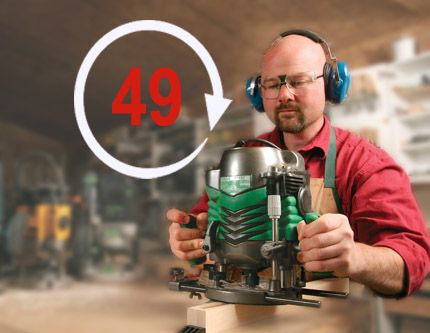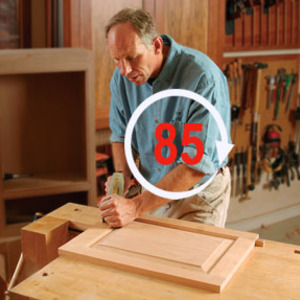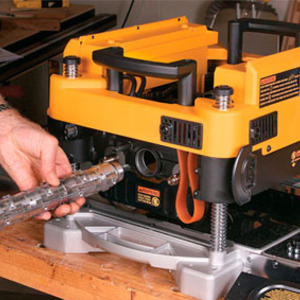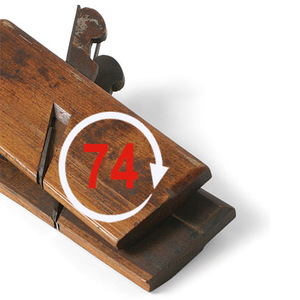
This week on Shop Talk Live, we demystify those horsepower ratings on your favorite power tools, tackle your woodworking questions and gain a better understanding of how hobbyists can tackle commission work.
 |
Every two weeks, a team of Fine Woodworking staffers answer questions from readers on Shop Talk Live, Fine Woodworking’s biweekly podcast. Send your woodworking questions to [email protected] for consideration in the regular broadcast!
Click on the link at left to listen to the podcast, or catch it in iTunes. Remember, our continued existence relies upon listener support. So if you enjoy the show, be sure to leave us a five-star rating and maybe even a nice comment on our iTunes page. And don’t forget to send in your woodworking questions to [email protected].
Shop Talk Live 49: Power Tool Power
![]() Learn what all those hyped up horsepower ratings on your favorite power tools really mean in terms of a motor’s capability. Plus, questions on workbench tops, kitchen cabinet construction, bent-wood laminations, and more! Plus, Matt Kenney dishes out on his experiences selling commisioned furniture pieces.
Learn what all those hyped up horsepower ratings on your favorite power tools really mean in terms of a motor’s capability. Plus, questions on workbench tops, kitchen cabinet construction, bent-wood laminations, and more! Plus, Matt Kenney dishes out on his experiences selling commisioned furniture pieces.























Comments
A heads up- If they are the same, I believe Lee Valley also sells thise Sigma Power sharpening stones.
Hey gentlemen. Don't let our pal Ed do any wiring for you. 230 volt equipment does indeed require two circuit breakers on each 115V leg - but there is no "neutral"! The third wore is the Ground! Current does not, (or should not under normal operations), flow in that wire. It flows only between the 115V legs. The voltage in these is out of phase by 180 degrees, so the voltage across them is 2 X 115 or 230V. As the current flowing out of one leg must return through the other, the breakers see identical current. Therefore, if you have a pair of 20 amp breakers on your 230V circuit, you have a 20A circuit - not 40 amps.
Also, with motor ratings, efficiency is a huge issue as alluded to in the podcast. Universal motors, (really AC/DC motors), have efficiencies at load on the order of 60%, or even less. This means that when loaded, they not only slow down, but they get HOT. Table saws, Matt's big jointer, and other stationary equipment use induction motors. These run at constant speed, regardless of load, and are much more efficient - on the order of 85-90%. Very large, 3-phase motors achieve better than 95%. All this means they run far cooler at a given mechanical output than universal types.
All this is why we use induction motors for table saws. If you substituted your 3 HP router motor in your table saw and tried to rip 8/4 oak stock with it, you would shortly see smoke coming from the stock as the blade slowed down, and shortly thereafter from the motor. After that, it would billow from the base of the saw cabinet as the molten metal from the motor fell into the dust collection area.
fiftyohm: Confused by your comment? Generally speaking, one wants to use a double pole 40 amp circuit. With 220 wiring - you have two hots and a ground, no neutral. Which seems like what you're saying. Who knows - I may have mis-spoken when I was balthering on.
mrossk:
The stones that Lee Valley sells are the Sigma Power Select II stones. I bought the Sigma Power stones. They names are confusing, but they are two different sets of stone. Chris Gochnour also reviewed the Select II stones when he reviewed the Power stones.
Matt
Hey Ed- I wouldn't call it 'blather' at all. You apparently just misspoke. Either way, the podcast is a staple of my Saturday mornings. I enjoy it immensely, laugh, cry, hurl, and always learn something. Keep it up, Buddy!
BTW: I caught Mike's video on ammonia fuming with 'regular' ammonia. Guess that answered the question we discussed last year. Talk to you soon.
Oh, right. Sorry for the mix-up, thanks for the clarification.
I really enjoyed this episode. You guys touched on a topic that has bounced around in my head for quite some time----how to price my work.
You are definitely right, you are not going to recover all of the hours spent on your project, but if you can recover some of it,good deal.
I am not making my living on selling my work, but I don't want to give it away either.
Blessings to you guys, keep up the good work.
Log in or create an account to post a comment.
Sign up Log in